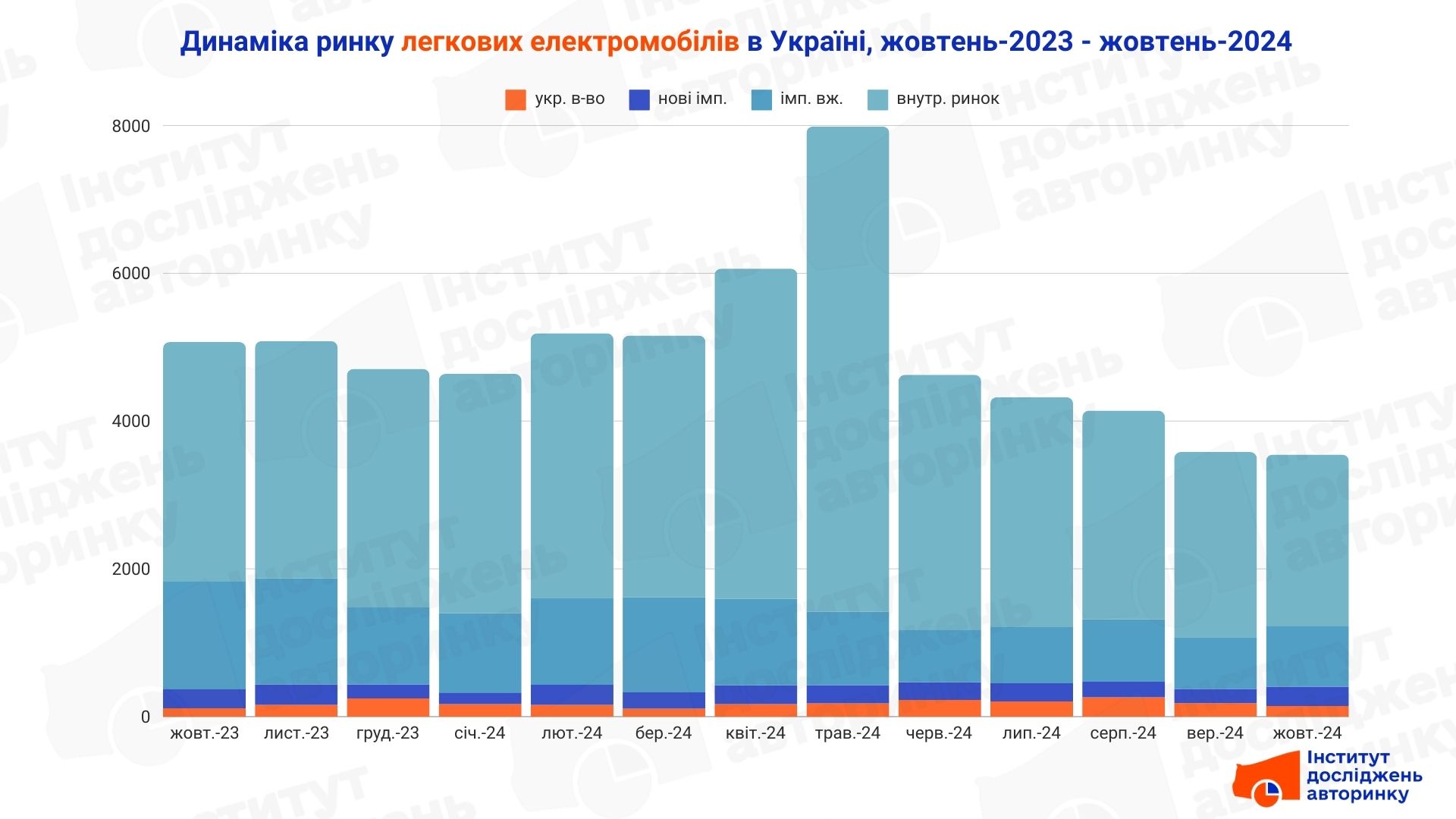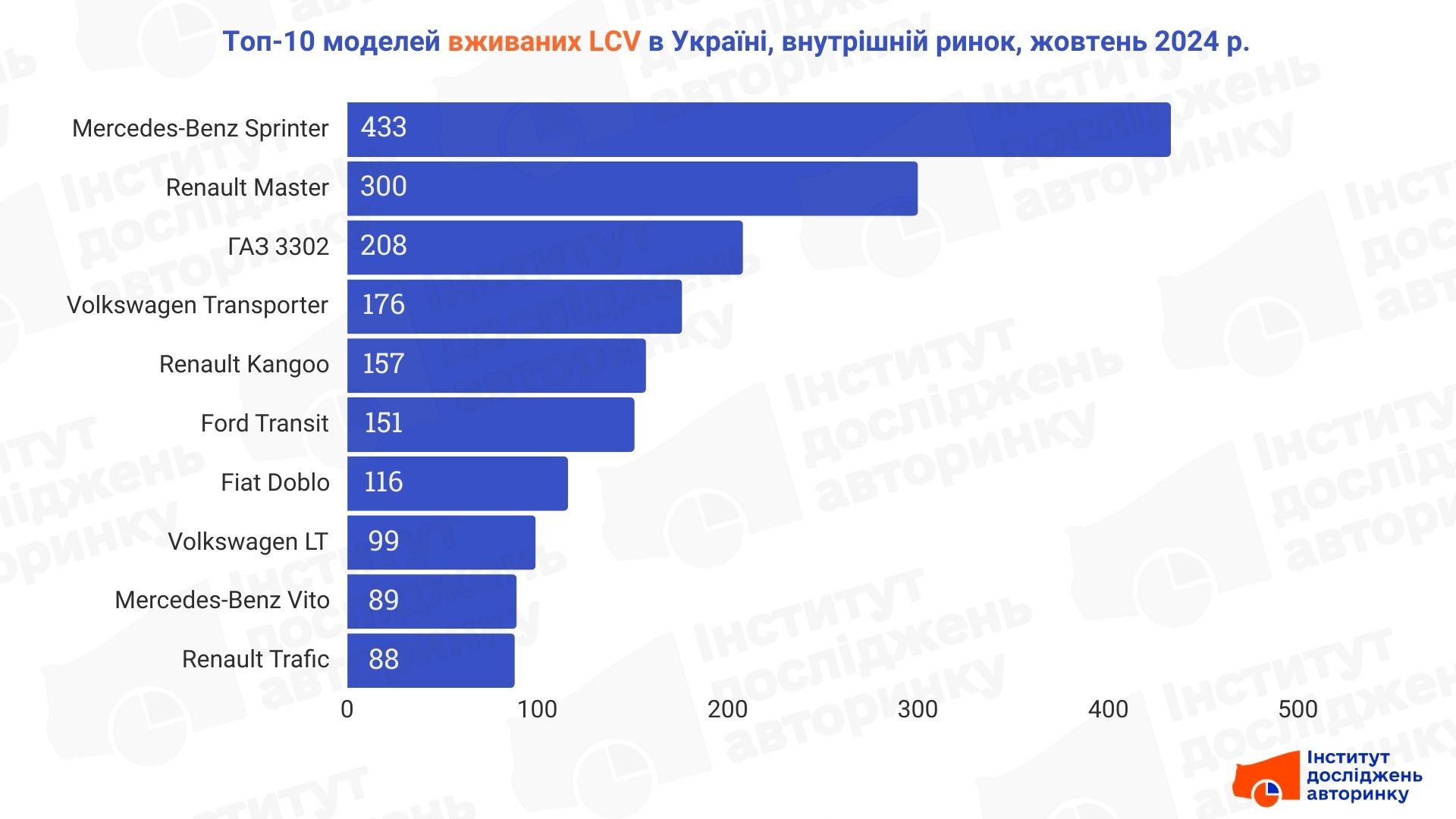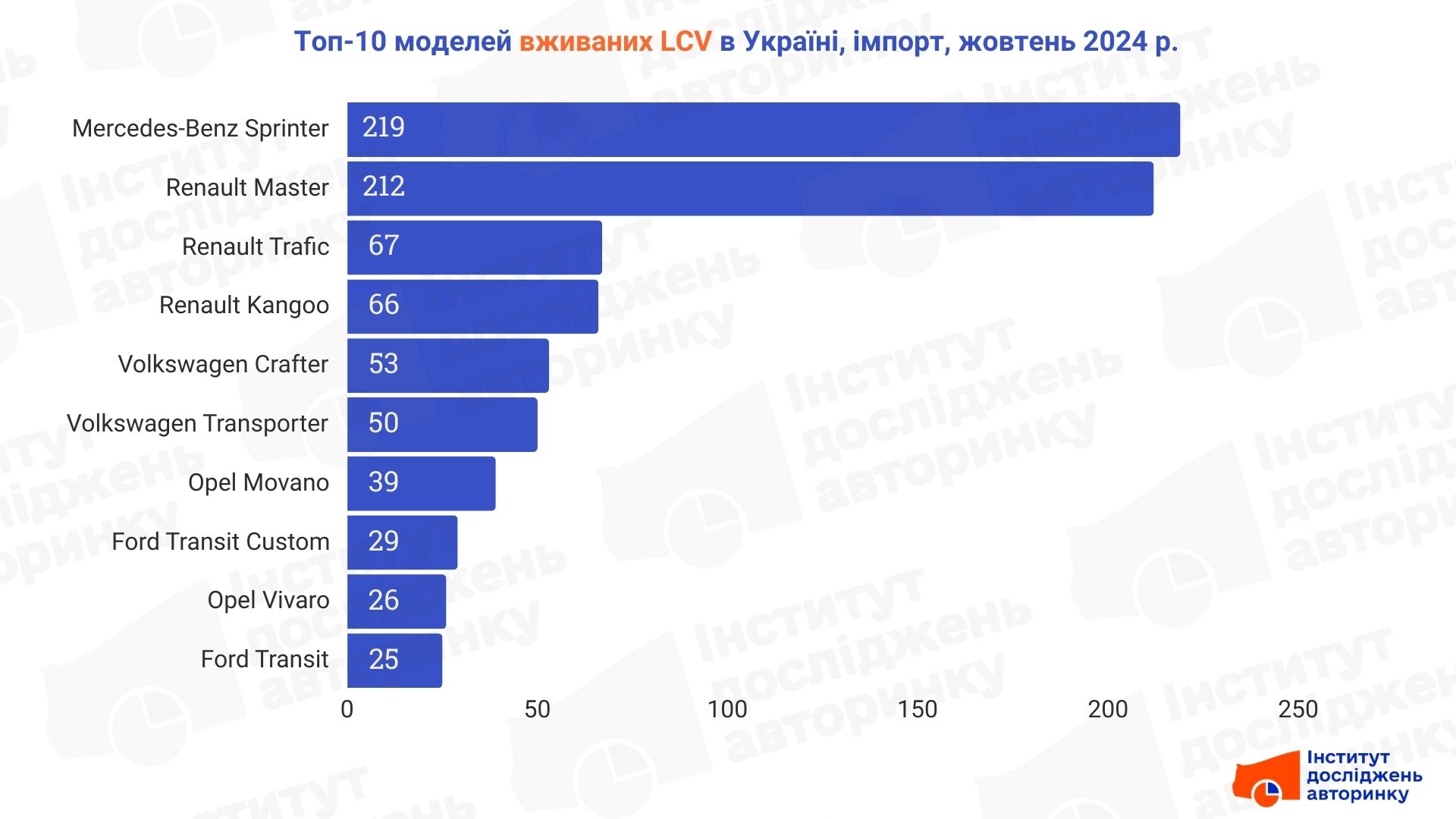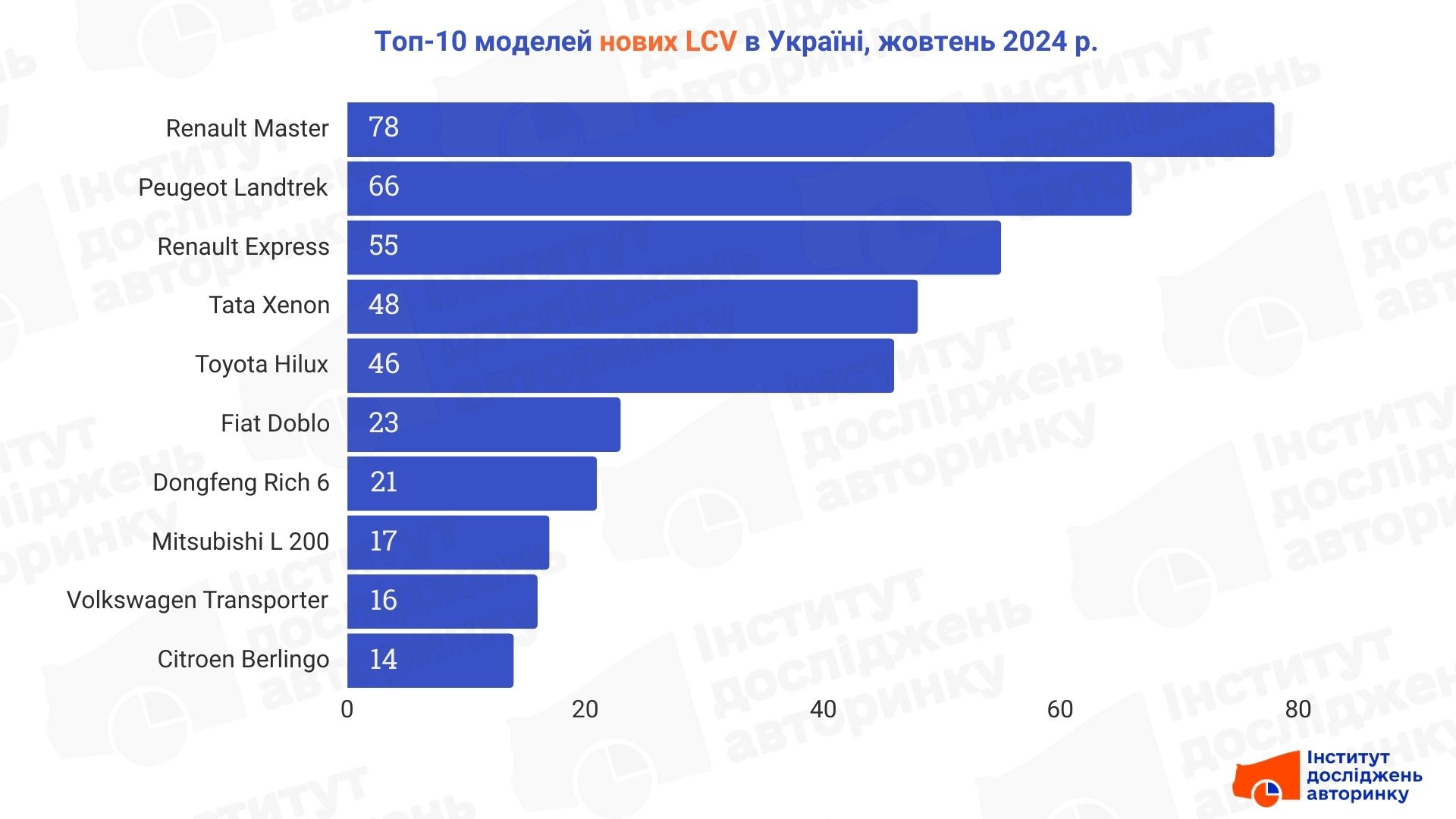The LCV (light commercial vehicle) offers a number of advantages that make it practical for both business and everyday use. These vehicles are fuel efficient, providing greater fuel efficiency compared to larger trucks, helping to reduce operating costs. Their compact dimensions make it easy to move in city traffic and maneuver in densely built-up areas. At the same time, LCVs have sufficient carrying capacity for transporting goods, which makes them ideal for small and medium-sized businesses. Cargo-passenger modifications add versatility, as they are suitable for both commercial purposes and personal use.
Specialists of the Institute of Car Market Research determined the dynamics of sales in this segment, as well as the most popular types and models for each of the groups. Letʼs start with the total volume of trades. During October, a total of 4,500 LCV vehicles were purchased, which is the lowest value over the past 12 months. Compared to previous periods, this volume looks as follows (MM-M — compared to September 2024, YY compared to October 2023):
- Domestic resales: -2.8% MM, -20.8% YY
- Used imports: +8.7% MM, -7.9% YY
- New imports: -5.0% MM, +27.4% YY
- Made in Ukraine: -44% MM, +14% YY

The diagram shows how after the peak in May, which was caused by a change in the rules for mobilizing transport from private owners, who then massively reissued it to other persons, the volume of trades returned to average statistical values, and later fell even lower. Demand for business transport continues to decline.
The structure of the segment is as follows: the largest share, which is 67%, is for domestic resales; 20.7% was occupied by imported used light trucks, 11.3% by new imported trucks, 1.1% by manufactured or converted in Ukraine. The total share of new cars is 12.3%. Based on the share of each of the sub-segments, we will consider them in detail in the same order.
LCV is a domestic market
In this part, cargo vans, which form the basis of the segment, are traditionally the most popular. Low-tonnage vans and cargo-passenger versions are less often bought.
Among the individual models, the Mercedes-Benz Sprinter dominates, with Renault Master and, at least for now, GAZ-3302 in the top three. In total, 3,038 sales contracts were concluded within the country.

LCV — import used
Last month, 938 cars of the LCV family were added to our fleet. Similar to the previous sub-segment, buyers here most often chose "driven" cargo vans, somewhat less often refrigerated vans and on-board awning versions.
This group is led by Mercedes-Benz Sprinter and Renault Master, with a similar number of "freshly driven" cars. Renault Trafic is third in the standings.

LCV — new sales
In October , 561 new light trucks hit Ukrainian roads for the first time. Of this number, 511 were imported, 50 were registered as produced (or converted in factory conditions) in Ukraine.
In this part of the market, the most popular types are vans, pick-ups and cargo-passenger cars.
Renault Master became the leader among new LCVs. In second place are Peugeot Landtrek pickups, which got here because they were registered as trucks. The third place goes to the Renault Express van.

It is interesting that among the used (combining the domestic market and imports) light commercial cars, 84.9% are diesel versions, 7.9% are gasoline versions with gas cylinder equipment on board, and 4.8% are gasoline ones. The share of electric cars here is only 2.4%.
Among the new LCVs, the picture is as follows: 95.7% are diesel, 2.3% are electric, other versions share the remaining 2%.
- Get more information about LCV or any other segment - contact the Institute of Car Market Research!
Subscribe to the Telegram channel of the Auto Market Research Institute to be the first to receive information without advertising or spam.



